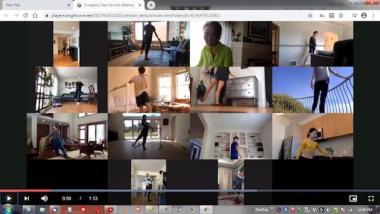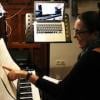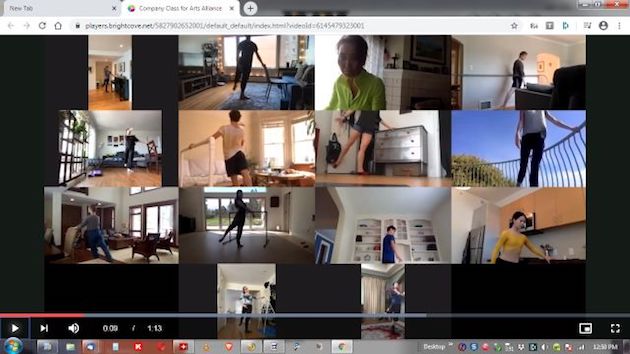
Direct, close contact, a supportive hand on the offending limb, eye-to-eye communication: These are some of the essential components of ballet coaching — the very ones not possible during the virus pandemic. And yet, San Francisco Ballet is surging ahead with livestreamed video classes for all dancers.
Similar misgivings and equal determination are heard from Janice Murota of Berkeley Community Chorus and Orchestra:
“Physical distancing is the antithesis of what a community chorus is all about. A community chorus, like BCCO, works really hard to sing well. We rehearse for four months before our performances twice a year. The community we form as we breathe, learn the music, and sing together is a vital component of who we are. Who are we in times of physical isolation?”
In the SF Bay Area — as across the country and many parts of the world — artists take up the challenge of COVID-19 by staying together and keep working through the woefully “distant” but only available means of continuity.
SF Ballet’s livestreaming class, three times a week, is available for viewing (and moving along with, but without getting instruction) to the public Tuesday, Thursday, and Saturday at 1 p.m. PDT, and if you miss a livestream, SFB also provides archived sessions.
You can watch the dancers log in from their homes to take classes taught by ballet masters. For ballet dancers, daily class is a ritual as sure as a morning cup of coffee. In this era of social distancing, company members use Zoom to unite and take class together, as a team, but from the confines of their homes.
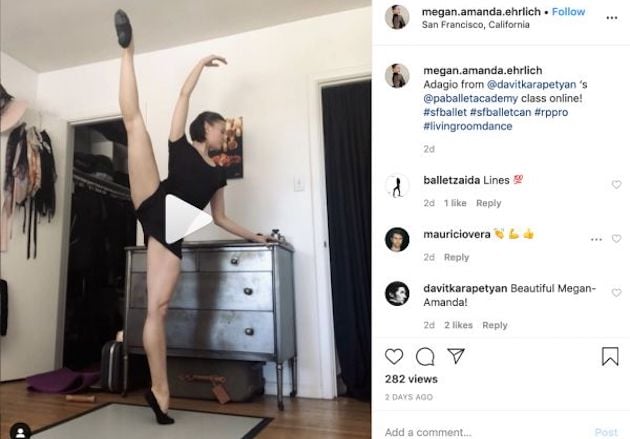
From the experience of SFB corps de ballet member Megan Amanda Ehrlich:
I’ve been taking adapted ballet classes every day and trying yoga and Pilates, but there’s only so much you can manage in your living room. I put a strip of Marley [dance flooring] by my dresser that now doubles as my barre. It’s not ideal.
We were supposed to be performing beautiful ballets (one piece I had hoped to perform since I saw it eight years ago, and in another I was finally going to dance a part I’d dreamed of), sharing the work with thousands of patrons each night in the Opera House! Nothing can replace that.
With the Zoom classes we’re at least able to see our colleagues, hear our teachers, and have live music. It helps remind us to take things day by day and know we’re still working together, supporting each other, and that we will eventually be back."
For the Berkeley Community Chorus, this will be the first time that it cancels a concert in its 54-year history. The program for the June events was both the Anton Bruckner and Arvo Pärt settings of Te Deum.
Murota says there was a scare in early March when the tenor section leader returned from northern Italy, where he had gone to visit family. When the virus started showing up in one hot spot after another, he flew home early and self-quarantined in a friend’s vacant apartment for 14 days:
“Marco really missed seeing his 8-year-old son Hiroki and 11-year-old daughter Riana. The story has a happy ending. He developed no symptoms in the self-isolation days and is happily reunited with his family.”
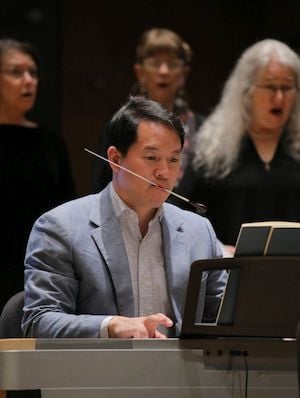
The BCCO chorus had its first Zoom meeting in mid-March, led by Music Director Ming Luke and pianist Paul Caccamo. There were vocal technique lessons from Deb Golata, a vocal warm-up from Julia Morris, assistant conductor. “It was nice to ‘chat’ with each other on the sidebar and then to sing, even though we couldn’t hear each other,” Murota says. She quotes bass Stan Dewey, who said he enjoyed “singing alone-together-alone.”
For Luke, already experienced in the joys of Zoom dinners with colleagues, the switch to livestream rehearsals was easy — not equally true for some of the singers.
BCCO bass Christian Fritze, who helped with the technology, says the Zoom videoconference connects three or four conductors, presenters, and musicians who rotate as the focus of the session. “The cheapest Zoom Pro account includes an option to stream the videoconference live to sites like YouTube. Thus, by passing some software credentials between Zoom and YouTube, we can invite the chorus to a livestream on YouTube, through which they can watch the video conference in near real-time.
“So presenters are conferencing live, and [the] chorus (160 of us last Monday) can watch and sing along from their own homes. Chorus simply receives the broadcast, no two-way interaction other than text chats on the YouTube channel.”
Difficulties, Murota says, are technical and psychological, BCCO organizers having spent hours trying to get some of the singers set up with Zoom, and getting used to the physical distance by chorus members, who find important value in BCCO for their social activity.
She is missing even carpooling to rehearsals: “Its camaraderie is not to be underestimated. In a car, away from screens, you discover things about each other that you wouldn’t know from the rehearsal hall.
“Once we’re inside St John’s, we’re working at learning the music. In my carpool (with a general contractor, meat/fish counter guy at Safeway, retired immigration judge, retired MD) we have ‘carpool poetry,’ taking turns to read or recite poems as we wend our way through the streets of Berkeley. That poetry experience is just one of the many things livestreaming cannot give you.”
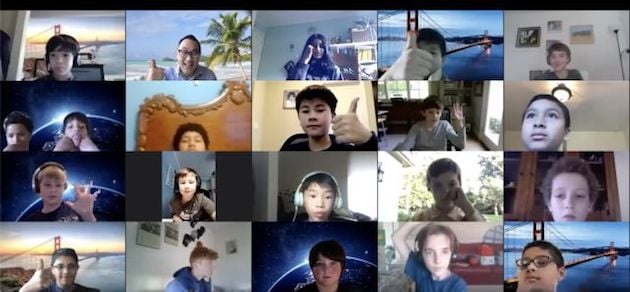
Another chorus, the Ragazzi Boys, also embraced the digital age by necessity. Music Director Kent Jue created lesson plans and practice material for each week to keep learning pieces, allowing the group to rehearse remotely. The 251 members of the Grammy-winning Silicon Valley chorus, ages 6 to 18 years, continue their studies and practice singing in a number of languages, sight singing, and music theory.
Accompanists have created rehearsal tracks for the boys to practice their parts from their homes. Jue and Ragazzi’s group leaders ask each member to send back his work in a video, and they provide the boys feedback and notes.
Jue sees this as an opportunity for the group: the leaders get to work with the boys individually on solo work and give them personalized feedback on their growth. This is something he has been wanting to do for a long time but hasn’t been able to organize because of the chorus’s large member base.
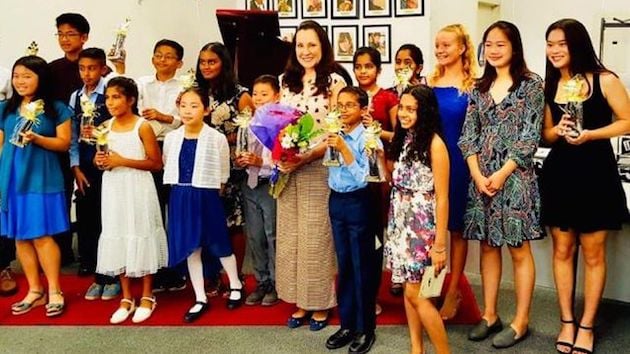
Piano, voice, and other music teachers are all following the digital example, overcoming technical, pedagogic, discipline, and emotional challenges. Pleasanton, CA, piano teacher Sofia Biktimir says she has found the experience “both interesting and frustrating”:
Probably the hardest thing is not being able to demonstrate a particular touch or gesture up close or being able to manipulate your student’s hands, arms, or fingers. Besides that, there are many others challenges: technical equipment, fast/reliable internet, good phone/iPad/microphone; the sound quality is not always good as we’d like.
FaceTime/WhatsApp are designed for speech not for music; no ability to mark student’s music; lack of concentration, as students may be more distracted at home; music theory hassle ... and so on.
But as soon as I see my students’ happy faces on the screen, who can’t wait to get to their remote lesson, I forget about how frustrating at times distance teaching gets, and understand clearly how unbelievably rewarding my job is."

